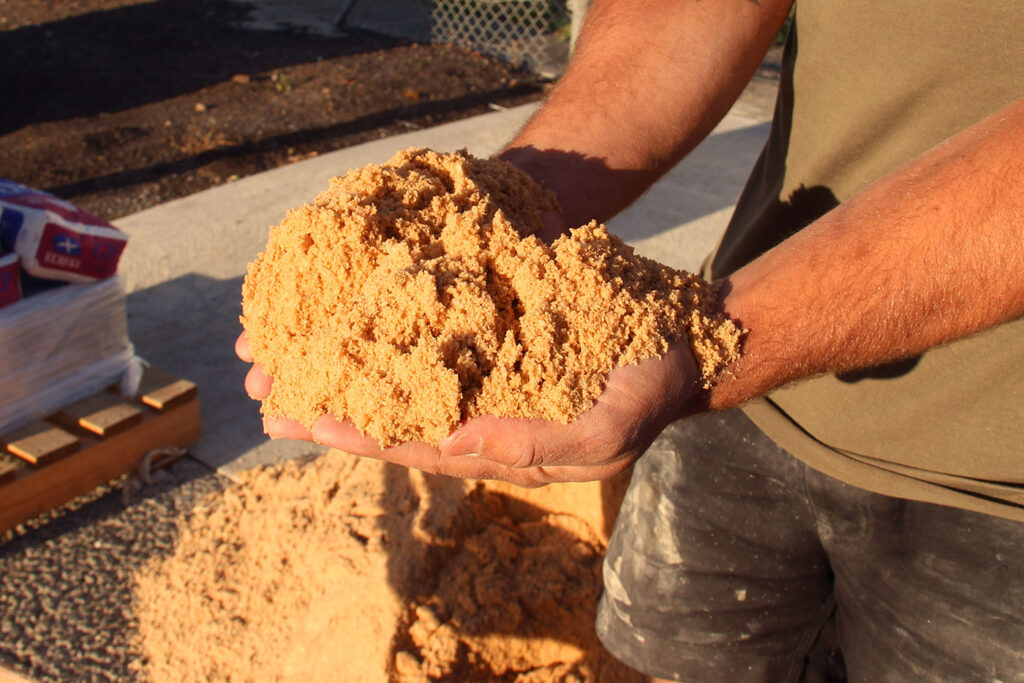Cement production is the world’s biggest industrial cause of carbon pollution.
As a precast concrete manufacturer, SVC has made it a priority to reduce the CO2 emissions associated with cement production, by substituting a portion of the cement in our products with supplementary cementitious materials. Decreasing the amount of standard cement required to make our products translates to a reduction in the associated carbon emissions.
What are supplementary cementitious materials?
Supplementary cementitious materials (SCMs) are products that can be used in concrete mix designs to replace standard cement. There are various benefits of using SCMs in concrete, such as increased strength, durability, material working properties and, importantly, the contribution to environmental and energy conservation.
SCMs are typically toxic by-products of other industrial processes, which can be harmful to the environment in their natural state. The SCMs most commonly used in the production of SVC’s concrete products are fly ash and slag. Other SCMs include silica fume and calcium carbonate.
Fly ash is a fine powder that is created during the process of burning coal to produce energy. It contains a high concentration of heavy metals such as arsenic, lead and selenium – all of which are harmful to our natural environment and ecosystems. When used in concrete, fly ash is rid of its harmful properties and becomes inert, reducing hazardous risk to the environment.
Slag is a by-product that is left over from the production of iron ore through a blast furnace. Molten slag becomes granulated when cooled, and is ground down to a fine powder which can then be used within concrete. Concrete mixes that include slag provide better workability, and the resulting products have been shown to demonstrate higher compressive strength and better durability.
How does SVC use SCMs in its products?
SVC works with supply partners such as Independent Cement and Holcim Australia to obtain blended cements and pre-mixed concrete that contain a percentage of SCMs. These ingredients are used to produce our diverse range of concrete products, where the majority of products now contain some form of waste or recycled material.
Introducing SCMs into concrete is not as simple as it sounds. Changes to concrete mix designs must undergo multiple iterations and rigorous testing, ensuring that the final products still retain the required performance and compliance characteristics for their designated function. Manufacturing processes must also be carefully monitored and tested, ensuring that any alterations do not render them unfeasible.
What results have been achieved by SVC so far?
SVC’s standard Civil product range (concrete frames and inserts, kerb lintels, civil accessories) is produced using concrete batched in-house. Batched concrete uses Ecoblend cement, which contains a minimum of 30% SCMs (slag). In FY22, based on the usage of 468 tonnes of Ecoblend instead of standard cement, SVC was able to achieve a CO2 reduction of approximately 98 tonnes.
SVC’s standard concrete pits are made with Holcim’s EcoPact Zero pre-mixed concrete, a product which reduces embodied carbon by 30-60% via its use of SCMs (fly ash, silica fume and slag). The remaining embodied carbon is then offset through government-approved schemes. In FY22, SVC attributed a CO2 saving of 80.3 tonnes to its use of EcoPact Zero pre-mixed concrete.
At SVC’s eastern production facility, paving products are consistently manufactured using concrete mixes that include a minimum of 12% slag, allowing further reductions in CO2 emissions.
—
SVC is proud of our successes to date, made possible by our strong supply partnerships and our persistence in trialling, testing and refining our processes and operations to reach viable outcomes.
Our investigation into SCMs and product development does not end here – we will continue to explore further methods to reduce our carbon emissions across the entirety of our product range, aiming for continuous improvement and increasing our positive environmental impacts.



